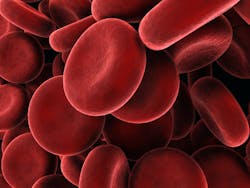Quality Control (QC) and Quality Assurance (QA) in the clinical lab have changed. The Centers for Medicare and Medicaid Services (CMS) has embraced a voluntary QC option for meeting CLIA quality control standards called Individualized Quality Control Plan (IQCP), which was implemented in January 2016 for all labs that have been utilizing Equivalent Quality Control (EQC). CLIA QC regulations will remain the same as published in 2003. All of the pre-analytical, analytical, and post-analytical systems requirements in the CLIA regulations will remain in effect.
There are many different aspects of the IQCP for laboratories to consider. This article will cover the minimum requirements for use of external quality controls with regard to blood gas QC.
Minimum guidelines
The minimum guidelines according to CLIA 88 (2003) require laboratories to perform external quality control at least one time per eight-hour shift.1 The IQCP does not change this requirement. In addition to the daily QC requirement, the laboratory is also responsible for calibration verification for all non-waived “moderate to high-complexity” test systems.
The laboratory must perform calibration verification at least twice per year, for documentation purposes, as well as whenever any of the following occurs: 1) after any major preventive maintenance; 2) when critical parts affecting an instrument’s performance are replaced; 3) after the laboratory switches lot numbers on the reagents it used in conjunction with an instrument; and 4) after the laboratory identifies an unusual trend or shift reflected in its control material, or results that fall outside of established acceptable limits.
External vs. internal
What qualifies as external quality controls vs. internal quality controls?
Many of today’s automated blood gas (ABG) instruments now have internal onboard QC. Since January 2016 there have been questions on whether a laboratory could be cited on inspection for utilizing these internal controls to fulfill their external control requirement as per CLIA 88. One of the questions is: At what point is the QC material introduced to the ABG instrument for daily QC? If the internal QC is introduced at the beginning of the sample flow path on the ABG instrument, does it constitute an external QC? On some ABG instruments with internal QC, the QC material is entered into the sample flow path further down the line. Following the first rule of the IQCP, the risk assessment (pre-analytic phase), contains five mandatory areas to include: 1) specimen handling; 2) personnel handling the sample; 3) instrument; 4) reagent; and 5) environment.2
The laboratory runs the risk of error utilizing internal QC as its external QC requirement. Since the ABG instrument is introducing the QC sample automatically, it eliminates the specimen handling and personnel handling of the sample; the risk assessment for these two mandatory areas is eliminated by the ABG instrument; the risk of error for these areas is not tested with the use of an internal control. The pre-analytic phase, specimen/personnel handling the sample, is missed completely. Potential errors could be missed, particularly when time from patient draw to introducing the sample is a critical factor in the testing of the samples, as with blood gas testing.
When considering the blood gas pre-analytic phase, metabolic changes occur rapidly after sample drawing. The most obvious step to counter the metabolic change is to analyze the sample quickly. The International Federation of Clinical Chemistry (IFCC) recommends keeping transportation times to a minimum, as it will affect the values of the blood gas testing.3 Utilizing internal QC could create a potential error in the pre-analytic phase, as it does not allow the laboratory to take into consideration the sample transportation time, or that properly trained personnel is handling the sample, as well as the QC material. Since these are major factors in patient sample handling for blood gas, they should also be considered in QC material for blood gas.
External QC material options
When evaluating external QC material for blood gas, it is recommended that laboratories use QC material that is most like patient sample. The majority of blood gas QC manufacturers use an aqueous buffered material or perfluorocarbon emulsions solution. Although these are accepted QC matrices, they may not be the best option for blood gas QC. The other option to consider is reduced bovine hemoglobin solution (RBHS). An influential article published in 1993 established that there is a strong benefit to using blood gas QC manufactured with RBHS as the external QC material,4 and that has been widely accepted in the years since.
With the enforcement of the IQCP, laboratories should consider adopting a QC plan that includes the use of material that most resembles patient samples. If labs eliminate the questions of the internal QC material qualifying as an external control, and have trained personnel introducing the QC sample, at least three levels, once per each eight-hour shift, this most mimics a safe pre-analytic practice.
In order to meet laboratory requirements for calibration verification on blood gas analyzers, lab directors should consider the matrices of the material being used. RBHS-based calibration verification material will most resemble that of human samples. Using liquid stable, as opposed to lyophilized QC material, will also assist in eliminating any pre-analytical errors while reconstituting the freeze dried material.
These small adjustments in a QC plan for laboratories might save the lab considerable stress at inspection time, as well as assist in meeting requirements as per CLIA 88 (2003).
REFERENCES
- American College of Physicians. CLIA and your laboratory: a guide for physicians and their staff. November 2014. https://www.acponline.org/system/files/documents/running_practice/mle/clia-and-your-lab.pdf. 46.
- The Joint Commission. Quality control option changing for clinical laboratories. https://www.jointcommission.org/assets/1/6/JCP0314_QC_Clin_Labs.pdf
- Baird G. Preanalytical considerations in blood gas analysis. Biochemia Medica. 2013;23(1):19-27.
- Mahoney JJ, Wong RJ, Van Kessel AL. Reduced bovine hemoglobin solution evaluated for use as a blood gas quality-control material. Clin Chem.1993:39(5): 874-879.
Al Jordan serves as Vice President, Sales and Marketing, for Massachusetts-based Phoenix Diagnostics, a manufacturer of quality control and calibration verification material for blood gas, electrolyte, and chemistry analyzers worldwide. He has more than 30 years’ experience in the laboratory equipment and clinical diagnostics industry.

